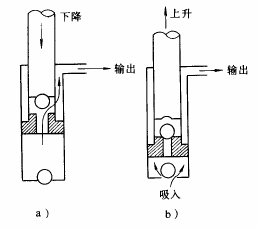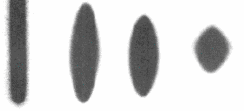What are the surface treatment methods?
I. Importance of Surface Treatment
Practice and application show that most coating defects come from poor surface treatment. No coating can perform excellently on poorly treated surfaces. Painting on rusted or oily surfaces is a significant waste of both time and money. High-quality surface treatment will extend the coating's life and enhance its overall properties. This is especially crucial for inorganic coatings, as high-quality surface treatment is essential.

II. Treatment Categories
Structural Treatment
The base material must undergo certain treatments, such as grinding sharp edges, rounding off chamfers, removing splashes, and repairing and smoothing weld holes.
Surface Cleaning
Remove substances harmful to the coating on the surface, particularly oxide scale, rust, soluble salts, grease, moisture, etc.
Surface Roughness
Increasing surface roughness enhances contact surface for the coating and provides mechanical bonding, improving the adhesion of the coating to the substrate. However, the roughness should not be too large, as it can lead to insufficient thickness at the peaks, causing early pitting.
III. Treatment Targets
Oxide Scale
Oxide scale seems to protect steel, but it is unreliable. Its surface consists of the chemically stable Fe2O3, the middle layer is Fe3O4, and FeO is tightly attached to the metal. Under the influence of water and oxygen, it easily forms hydroxides. Additionally, with changes in external temperature and mechanical action, the oxide scale quickly peels off. Various oxide scales are cathodic compared to bare steel. Corrosion occurs on the anodic surface, causing the steel plate to corrode. The best method to remove oxide scale is sandblasting.
Rust
Rust is a loose substance, which often traps moisture, oxygen, and corrosion products that frequently contain soluble salts. Methods such as grinding and sandblasting can be used to remove rust.
Zinc Salts
With the extensive use of zinc-rich and inorganic coatings, zinc salts (also known as white rust) pose a threat to the coating. These loose zinc corrosion products also affect the adhesion of the coating. Zinc salts can be removed with high-pressure freshwater, grinding, or a stiff brush.
Soluble Salts
Soluble salts such as ferrous sulfate and ferrous chloride not only directly damage the coating, causing osmotic blistering and poor adhesion, but they also act as catalysts, accelerating corrosion. The ideal method to remove soluble salts is high-pressure freshwater washing. Surfaces that are uneven or have gaps in old coatings, including ineffective or spongy anti-fouling coatings, easily harbor salt deposits and need careful washing.
Grease
Most coatings repel grease, and the attraction of grease is weaker. Grease on the substrate can cause pinholing, poor adhesion, and other problems. High-performance coatings such as epoxy and polyurethane show worse adhesion in this case than conventional oil-based coatings. Large amounts of grease should first be scraped off, then cleaned with solvents (alkanes or turpentine). However, this often worsens the situation by spreading the oil on the surface. Repeated cleaning with a clean cloth is required to be effective. Commercial chemical cleaners are effective at removing grease but must be confirmed as harmless to the coating. Hot water cleaning is also effective. For purely inorganic coatings, an ideal treatment is using neutral alkali water solution.
Old Coatings
Loose coatings must be removed. Coatings that affect subsequent layers should be sealed or removed. High-pressure freshwater should be used to remove any salt, dust, or oil residues.
Various Markings
Chalk marks are detrimental to adhesion and easily absorb moisture from the air. Paint marks, if of a different type than the required coating, can cause issues. The only solution is to grind them off.
Weld Smoke
Weld smoke from electric welding is usually alkaline. It severely hinders coating adhesion and can damage SPC anti-fouling coatings. It can be wiped off with clean water or solvents.
Dust, Abrasives, and Other Debris
After surface treatment, any dust, steel shot, grit, and other debris should first be swept away or cleaned with compressed air free of oil. Using a vacuum cleaner is the ideal choice.
IV. Conclusion
Correct surface treatment can significantly enhance the performance and extend the life of the coating. Understanding the characteristics and treatment methods of different surface treatment targets is crucial for ensuring the quality and durability of coatings.
